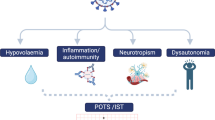Abstract
Caloric testing is considered the ‘reference standard’ in determining vestibular hypofunction. Recently, the video-head impulse test (vHIT) was introduced. In the current study we aimed to assess the diagnostic value of the vHIT as compared to caloric testing in determining vestibular function. In a cross-sectional study between May 2012 and May 2013, we prospectively analysed patients with dizziness who had completed caloric testing and the vHIT. For the left and right vestibular system we calculated the mean vHIT gain. We used a gain cut-off value of 0.8 for the vHIT and presence of correction saccades to define an abnormal vestibular-ocular reflex. An asymmetrical ocular response of 22 % or more (Jongkees formula) or an irrigation response with a velocity below 15°/s was considered abnormal. We calculated sensitivity, specificity, positive and negative predictive values with 95 % confidence intervals for the dichotomous vHIT. Among 324 patients [195 females (60 %), aged 53 ± 17 years], 39 (12 %) had an abnormal vHIT gain and 113 (35 %) had an abnormal caloric test. Sensitivity was 31 % (23–40 %), specificity 98 % (95–99 %), positive predictive value was 88 % (74–95 %), and negative predictive value 73 % (67–77 %). In case of vHIT normality, additional caloric testing remains indicated and the vHIT does not replace the caloric test. However, the high positive predictive value of the vHIT indicates that an abnormal vHIT is strongly related to an abnormal caloric test result; therefore, additional caloric testing is not necessary. We conclude that the vHIT is clinically useful as the first test in determining vestibular hypofunction in dizzy patients.



Similar content being viewed by others
References
Aw ST, Haslwanter T, Fetter M (1998) Contribution of the vertical semicircular canals to the caloric nystagmus. Act Otolaryngol 118:618–627
Schmid-Provisceanu A, Böhmer A, Obzina HH (2001) Caloric and search-coil head-impulse testing in patients after vestibular neuritis. J Assoc Res Otolaryngol 2:72–78
Halmagyi GM, Curthoys IS (1998) A clinical sign of canal paresis. Arch Neurol 45:737–739
Beynon GJ, Jani P, Baguley DM (1998) A clinical evaluation of head impulse testing. Clin Otolaryngol 23:22–177
Harvey SA, Wood DJ, Feroah TR (1997) Relationship of the head impulse test and head-shake nystagmus in reference to caloric testing. Am J Otol 18:207–213
Magnusson M, Karlberg K, Halmagyi M, Hafström A (2002) The video-impulse test enhances the possibility of detecting vestibular lesions. J Vestib Res 11:231
Weber KP, MacDougall HG, Curthoys IS (2009) Impulsive testing of semicircular-canal function using video-oculography. An NY Acad Sci 1664:486–491
Jorns-Haderli M, Straumann D, Palla A (2007) Accuracy of the bedside head impulse test in detecting vestibular hypofunction. J Neurol Neurosurg Psych 78:1113–1118
Perez N, Rama-Lopez J (2003) Head-impulse and caloric tests in patients with dizziness. Otol Neurotol 24:913–917
Bartolomeo M, Biboulet R, Pierre G, Mondain M, Uziel A, Venail F (2013) Value of the video head impulse test in assessing vestibular deficits following vestibular neuritis. Eur Arch Otorhinolaryngol 271:681–688
Mahringer A, Rambold HA (2013) Caloric test and video-head-impulse: a study of vertigo/dizziness patients in a community hospital. Eur Arch Otorhinolaryngol 271:463–472
McCaslin DL, Gary JP, Marc BL (2014) Predictive properties of the video head impulse test: measures of the caloric symmetry and self-report dizziness handicap. Ear Hear 34:185–191
Committee on Hearing and Equilibrium (1995) Guidelines for the diagnosis and evaluation of therapy in Meniere’s disease. Otolaryngol Head Neck Surg 113:181–185
Lempert T, Olesen J, Furman J (2012) Vestibular migraine: diagnostic criteria. J Vestib Res 22:167–172
Zingler VC, Cnyrim C, Jahn K (2007) Causative factors and epidemiology of bilateral vestibulopathy in 255 patients. Ann Neurol 61:524–532
Jongkees LBW, Maas JPM, Philipszoon AJ (1962) Clinical nystagmography. Pract Otolaryngol 24:65–93
Bossuyt PM, Reitsma JB, Bruns DE et al (2003) Towards complete and accurate reporting of studies of diagnostic accuracy: the STARD initiative. BMJ 326:41–44
Goncalves DU, Felipe L, Lima TMA (2008) Interpretation and use of caloric testing. Rev Bras Otorhinolaryngol 73:440–446
MacDougall HG, Weber KP, McGarvie LA (2009) The video head impulse test: diagnostic accuracy in peripheral vestibulopathy. Neurology 73:1134–1141
Rambold HA (2015) Economic management of vertigo/dizziness disease in a county hospital: video-head-impulse test vs. caloric irrigation. Eur Arch Otorhinolaryngol 272:2621–2628
Acknowledgments
The authors thank P. Oostenbrink and S. Masius-Olthof for technical assistance.
Funding
This work was supported solely from institutional and/or departmental sources from the Apeldoorn Dizziness Centre, Gelre Hospital, Albert Schweitzerlaan 31, 7334 DZ Apeldoorn, The Netherlands.
Author information
Authors and Affiliations
Corresponding author
Ethics declarations
Conflict of interest
All authors declare that they have no conflict of interest to disclose.
Ethical approval
All procedures performed in studies involving human participants were in accordance with the ethical standards of the institutional and/or national research committee and with the 1964 Helsinki declaration and its later amendments or comparable ethical standards.
Informed consent
Informed consent was obtained from all individual participants included in the study.
Additional information
B. F. van Esch and G. E. A. J. Nobel-Hoff contributed equally.
Rights and permissions
About this article
Cite this article
van Esch, B.F., Nobel-Hoff, G.E.A.J., van Benthem, P.P.G. et al. Determining vestibular hypofunction: start with the video-head impulse test. Eur Arch Otorhinolaryngol 273, 3733–3739 (2016). https://doi.org/10.1007/s00405-016-4055-9
Received:
Accepted:
Published:
Issue Date:
DOI: https://doi.org/10.1007/s00405-016-4055-9




